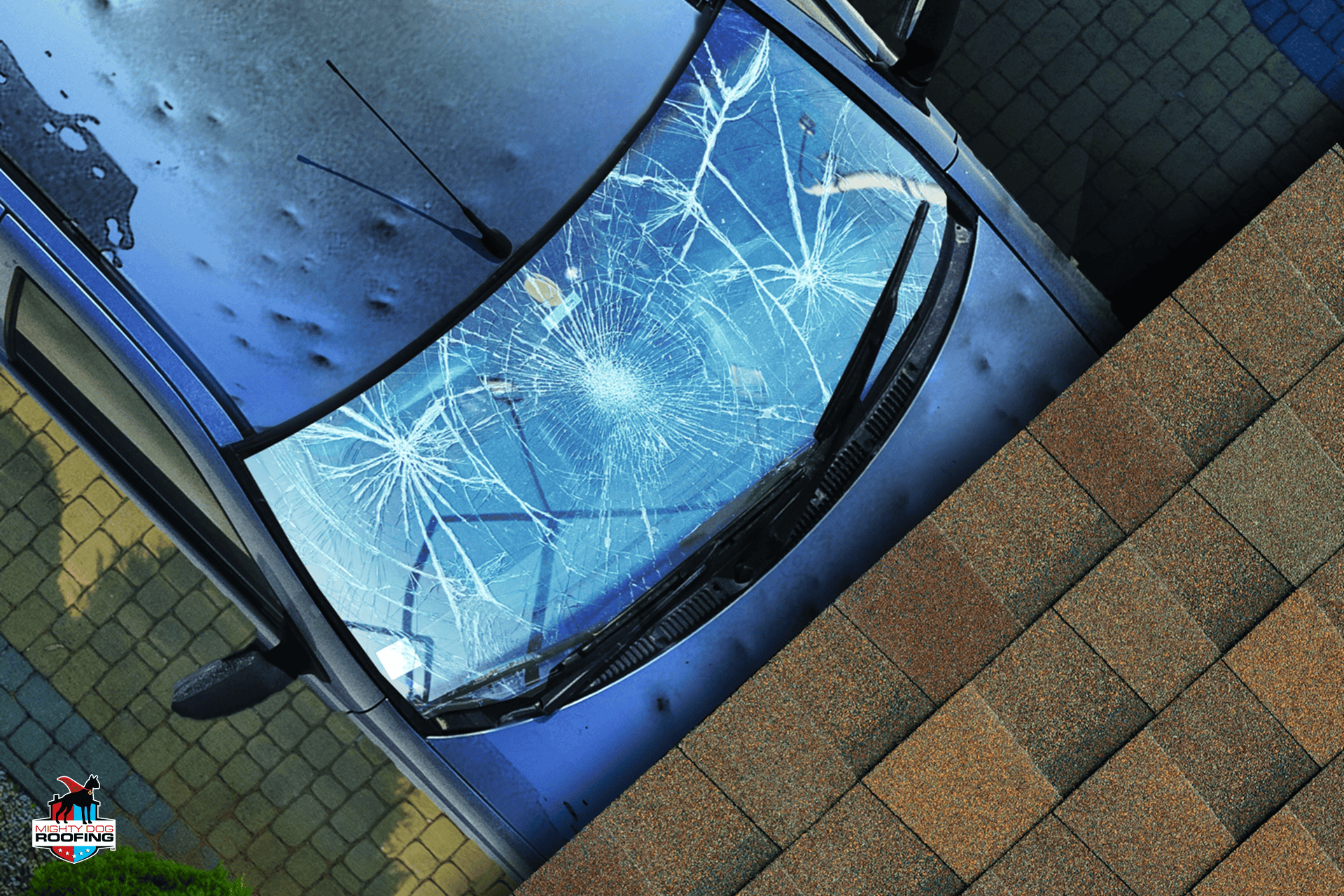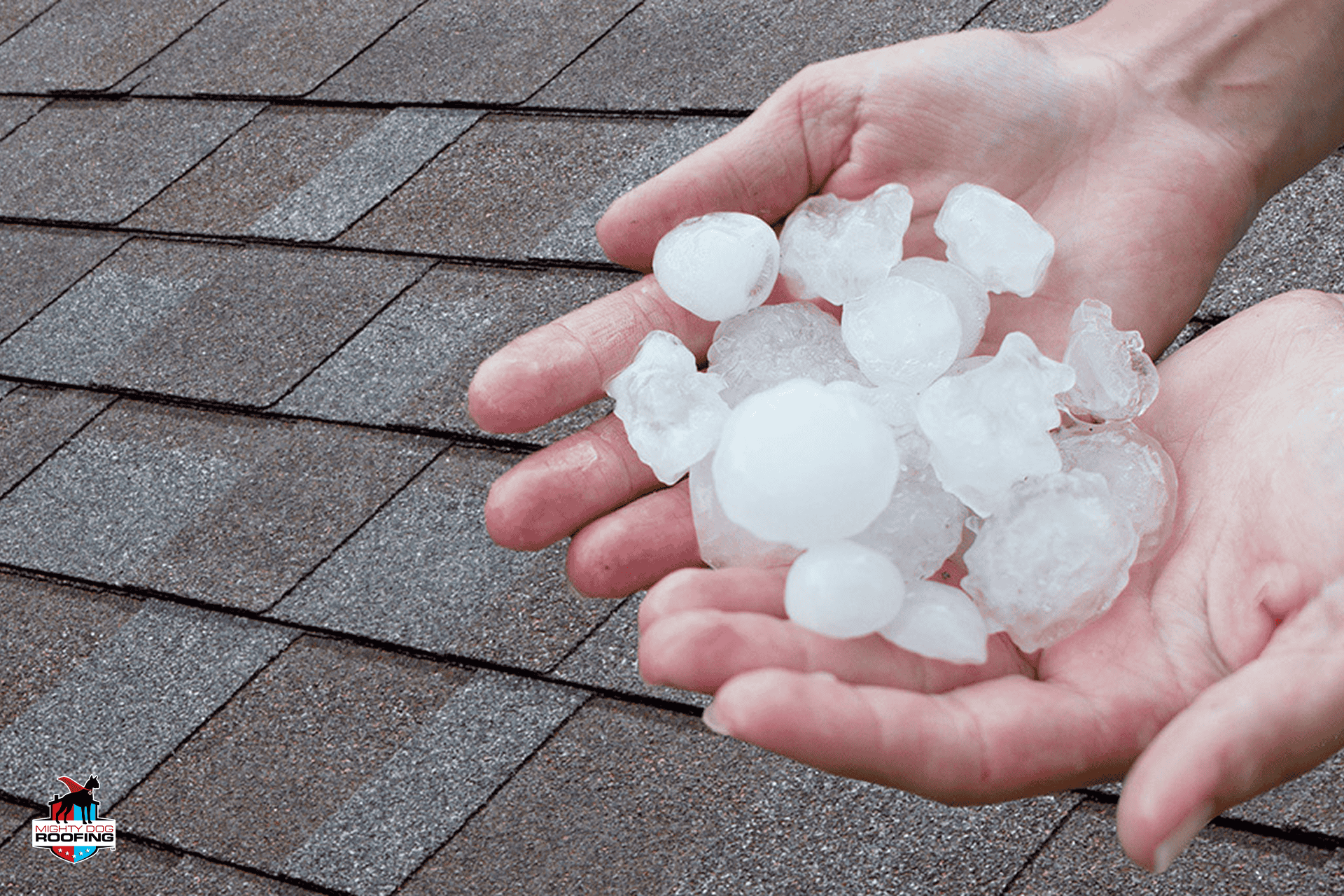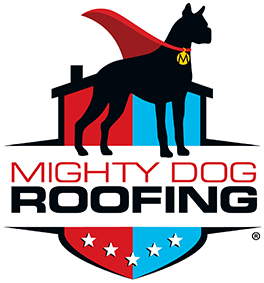In regions like South Jersey where extreme weather roofing challenges are becoming more frequent, the selection of protective materials for residential roofing is of utmost importance. Impact-resistant roofing, the latest advancement in roofing technology, is specifically designed to resist the force of severe hail and brutal weather conditions. Mighty Dog Roofing South Jersey integrates these state-of-the-art materials with skilled installation to erect a defensive barrier that safeguards your home and boosts its enduring worth.
Understanding Hail Damage and Roofing Vulnerabilities
The evolving climate conditions in South Jersey have elevated hail damage from a sporadic worry to an urgent danger for residential structures. Although many homeowners prioritize protection against wind and rain, hail presents distinctive challenges that conventional roofing materials often fail to withstand adequately. These dense balls of ice hurtle into homes at high speeds, generating impact patterns that can breach even freshly installed shingles. Lacking appropriate hail damage prevention measures, a solitary storm can trigger a sequence of structural issues that intensify over time, as witnessed firsthand by Mighty Dog Roofing through their extensive work with local homeowners.
The fiscal ramifications of hail damage underscore why roof protection should be a leading priority for all homeowners. Aside from the pressing need for hail damage repair, weakened roofing materials can lead to concealed structural problems, diminished energy efficiency, and reduced property value. Conventional insurance claims frequently fall short of covering exhaustive repairs, obliging homeowners to bridge substantial financial gaps. This reality has ignited growing interest in sophisticated roofing technologies that deliver proactive protection rather than reactive solutions.

The Anatomy of Hail Damage
Grasping the mechanisms of hail damage is pivotal for effective roof damage prevention. When hailstones collide with your roof, they generate distinct patterns of damage that fluctuate based on the intensity of the storm, the angle of impact, and the resilience of your roofing material. Traditional building materials frequently reveal immediate signs of compromise, while hail-resistant roofing materials exhibit superior defensive capabilities against these harsh elements. Mighty Dog Roofing has chronicled how various construction materials respond to different sizes and intensities of hail impact through years of experience.
Common Types of Hail-Induced Roof Damage:
- Surface abrasion occurs when hail dislodges protective granules, exposing the underlying fiberglass mat to harmful UV rays.
- Impact bruising manifests as circular indentations across shingles, often masking deeper damage to the underlayment.
- Fracture patterns materialize as linear cracks across shingles, jeopardizing their water-resistant properties.
- Puncture damage signifies severe impact sites where hailstones have completely penetrated the roofing layers.
The cumulative effect of these damage patterns emphasizes the necessity of choosing severe weather roofing engineered specifically for roof impact resistance. By comprehending these vulnerabilities, homeowners can make informed decisions about upgrading to impact-rated roofing that delivers comprehensive protection against extreme weather conditions.
Measuring Impact Resistance
The roofing industry utilizes the UL 2218 classification system as the preeminent standard for assessing impact resistance. This rigorous testing protocol replicates real-world hail impacts under controlled conditions, equipping homeowners with dependable data about materials' roofing performance. Each rating class denotes a specific level of impact resistance, ascertained through extensive laboratory testing where steel balls of varying sizes are dropped onto material samples from predetermined heights.
UL 2218 Impact Resistance Classifications and Testing Parameters
Rating Class | Steel Ball Size | Drop Height | Impact Speed | Pass/Fail Criteria |
Class 1 | 1.25 inches | 12 feet | 27 mph | No visible cracking |
Class 2 | 1.50 inches | 15 feet | 30 mph | No surface opening |
Class 3 | 1.75 inches | 17 feet | 32 mph | No tear exposure |
Class 4 | 2.00 inches | 20 feet | 34 mph | No penetration |
These standardized ratings carry significant implications for both performance and cost considerations. Insurance providers frequently offer substantial premium discounts for homes outfitted with Class 4 Impact-Resistant Roofing systems, acknowledging their superior protection against severe weather damage. When selecting roofing materials, grasping these classifications helps homeowners make informed decisions that balance immediate costs with long-term roof durability and potential insurance savings. Mighty Dog ensures their installations adhere to these rigorous standards, providing homeowners with optimal protection against severe weather conditions.

Advanced Impact-Resistant Roofing Materials
Contemporary residential roof protection epitomizes the pinnacle of severe weather protection technology. Modified asphalt shingles now incorporate advanced polymer compounds that revolutionize their impact resistance, featuring a rubberized asphalt base that flexes upon contact instead of fracturing. These materials work in tandem with cutting-edge synthetic underlayments and specialized fastening systems to create a comprehensive defense against extreme weather conditions. Metal roofing systems have similarly progressed, now featuring multi-layer coating technologies and structural reinforcements that resist denting while preserving aesthetic appeal.
The selection of impact-rated roofing materials extends beyond basic durability considerations to encompass long-term performance factors. While modified asphalt shingles offer familiar aesthetics with enhanced protection, metal systems excel in longevity and maintain their defensive capabilities for decades. Mighty Dog has pioneered the use of synthetic options that bridge the gap between traditional appearances and modern resilience, providing Class 4 impact resistance while mimicking the look of slate, wood, or tile. Each material type brings unique advantages to residential protection, allowing homeowners to balance architectural requirements with the demands of their local climate conditions.
Installation and Performance Considerations
The efficacy of impact-resistant roofing systems hinges on precise installation techniques and adherence to manufacturer specifications. Professional installation requires a comprehensive understanding of material properties, local building codes, and system integration principles. Mighty Dog Roofing's certified technicians demonstrate how each component, from the underlayment to the ridge caps, plays a crucial role in creating a cohesive defense against severe weather conditions.
Key Installation Requirements:
- High-grade synthetic underlayment must be installed with proper overlap and fastening patterns to ensure maximum protection.
- Nail placement requires exact positioning and depth to maintain wind resistance ratings and warranty coverage.
- Valley and ridge areas demand specialized flashing techniques to prevent water infiltration at these vulnerable points.
- Ventilation systems must be properly integrated to regulate temperature and moisture levels throughout the roofing system.
- Impact-resistant accessories and trim pieces should be installed according to manufacturer specifications for complete protection.
Long-term performance of your impact-resistant roofing depends on regular maintenance and professional inspections. Bi-annual evaluations help identify potential issues before they compromise the system's integrity, while prompt attention to minor repairs prevents escalation into major problems. This proactive approach to roof protection ensures your investment continues to deliver optimal performance and protection throughout its expected lifespan.
Financial and Insurance Implications
Upgrading to impact-resistant roofing represents a strategic investment in your home's defense against severe weather conditions. The upfront cost difference between traditional and impact-rated materials reflects advanced technologies and superior construction. This investment typically delivers exceptional returns through reduced maintenance costs, decreased storm damage repairs, and extended longevity. Homeowners who partner with Mighty Dog Roofing often discover that the initial premium pays for itself through years of reliable performance and minimal upkeep, particularly in regions where extreme weather events regularly challenge residential systems.
The insurance industry has embraced the protective capabilities of impact-resistant technologies by offering substantial financial incentives to homeowners who make this upgrade. Many major insurance carriers provide premium discounts specifically for properties protected by Class 4 impact-resistant materials, acknowledging their effectiveness in preventing hail damage and reducing claim frequency. These roofing insurance considerations, combined with the decreased likelihood of paying out-of-pocket deductibles after severe storms, create a compelling financial advantage for roofing investments. Forward-thinking homeowners increasingly recognize that selecting advanced materials not only protects their property but also offers a practical path to long-term cost savings and enhanced home value.
Secure Your Home's Future with Impact-Resistant Roofing
Don't wait until after storm damage occurs to upgrade your home's protection. Contact Mighty Dog Roofing South Jersey today to explore our comprehensive selection of impact-resistant solutions. Our experienced team will guide you through the latest advances in severe weather roofing materials, help you select the perfect system for your home, and ensure expert installation that maximizes your investment's protective capabilities. Take the first step toward superior roof protection and long-term peace of mind by scheduling your free consultation and detailed assessment.


